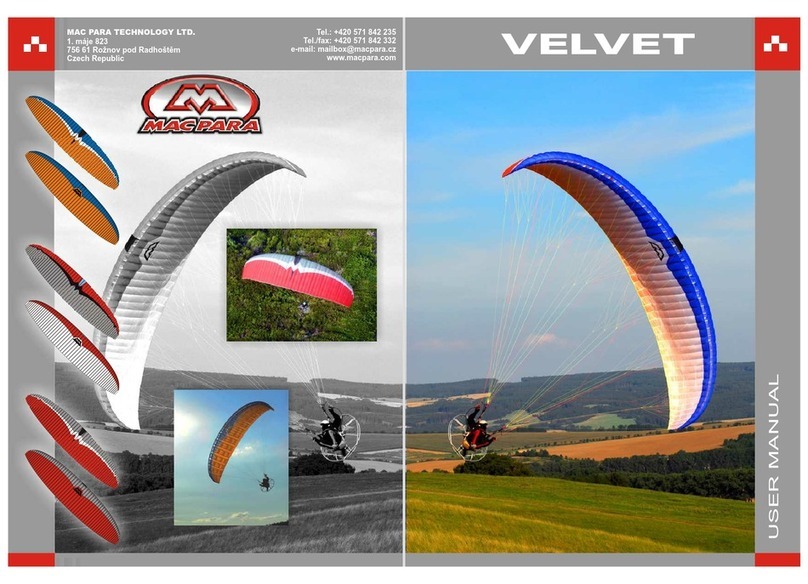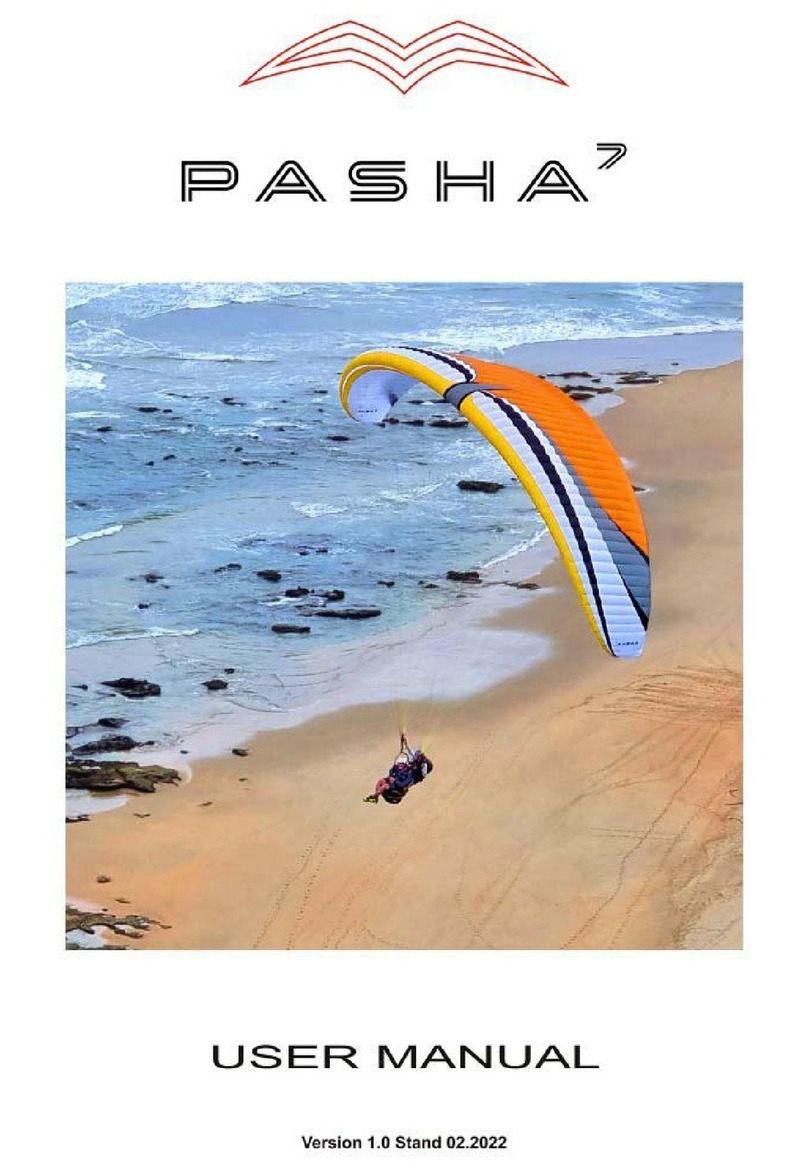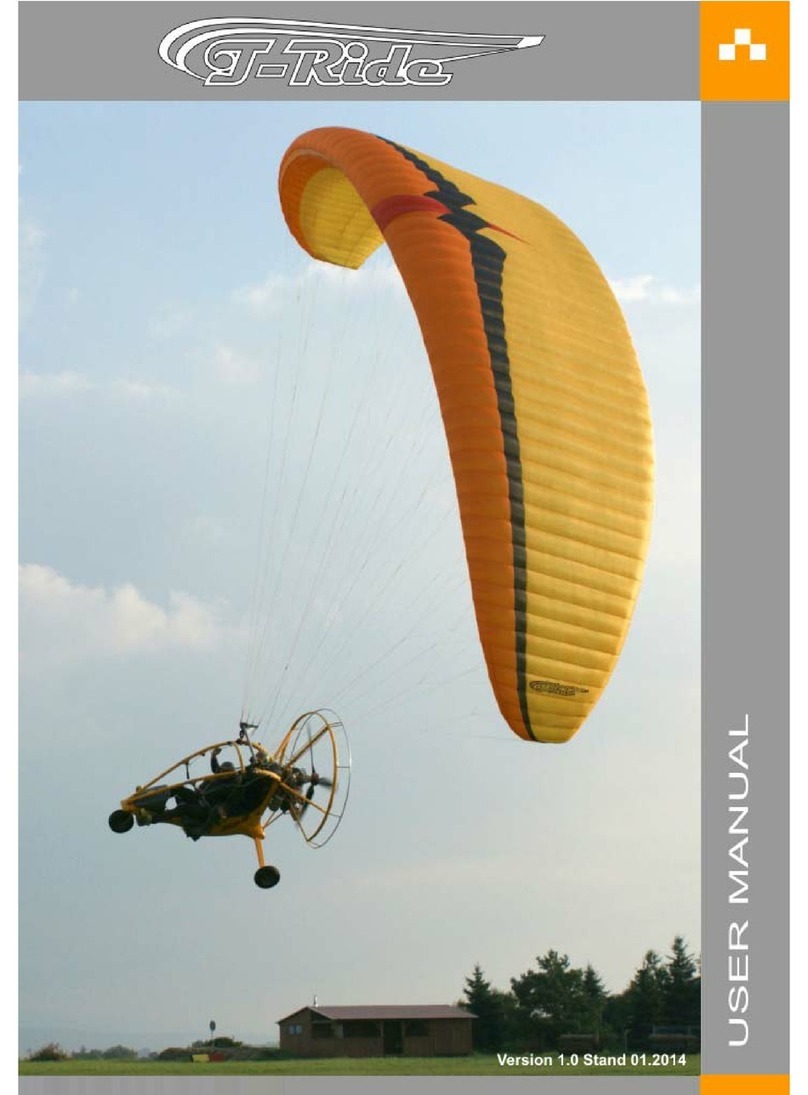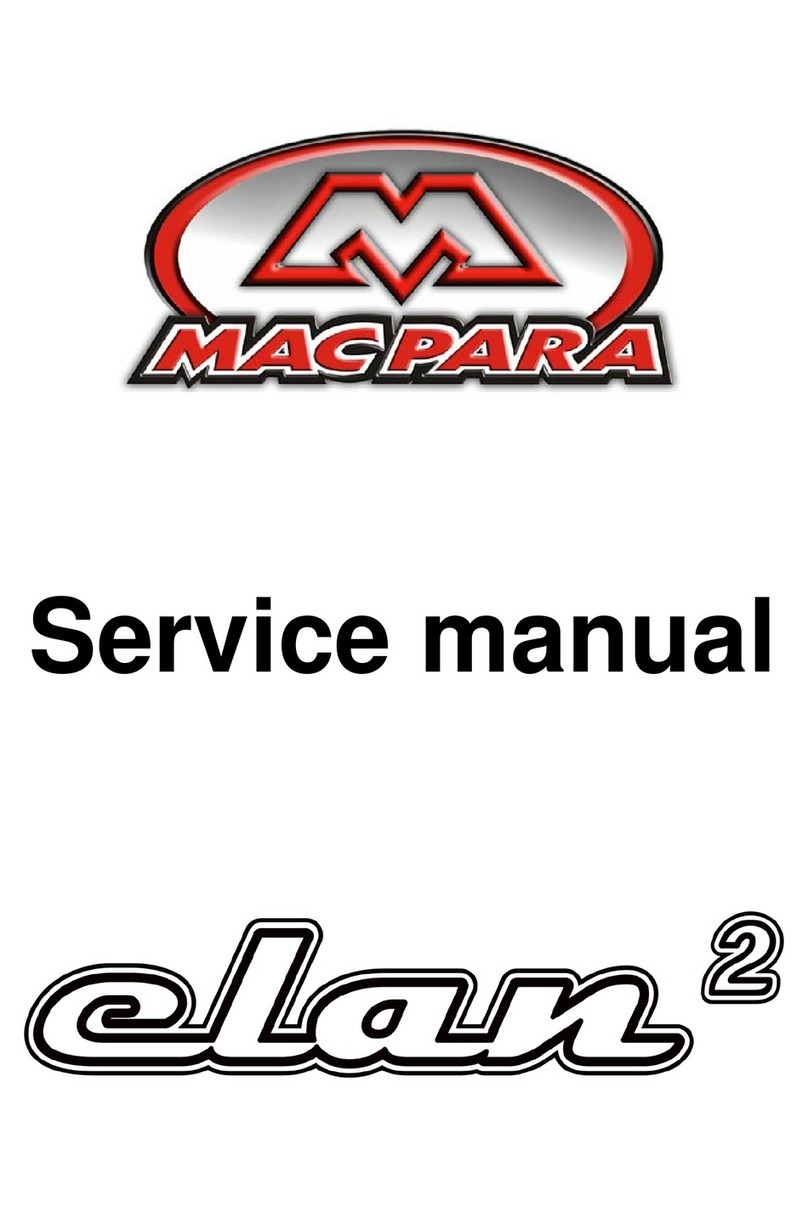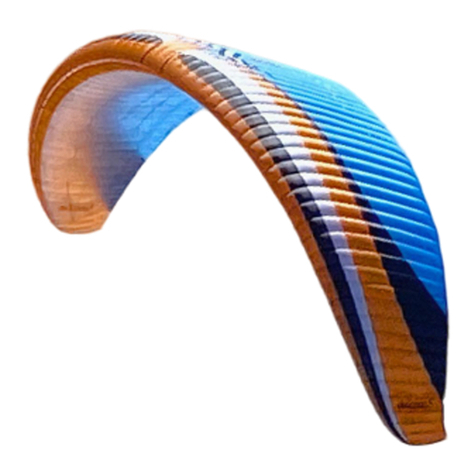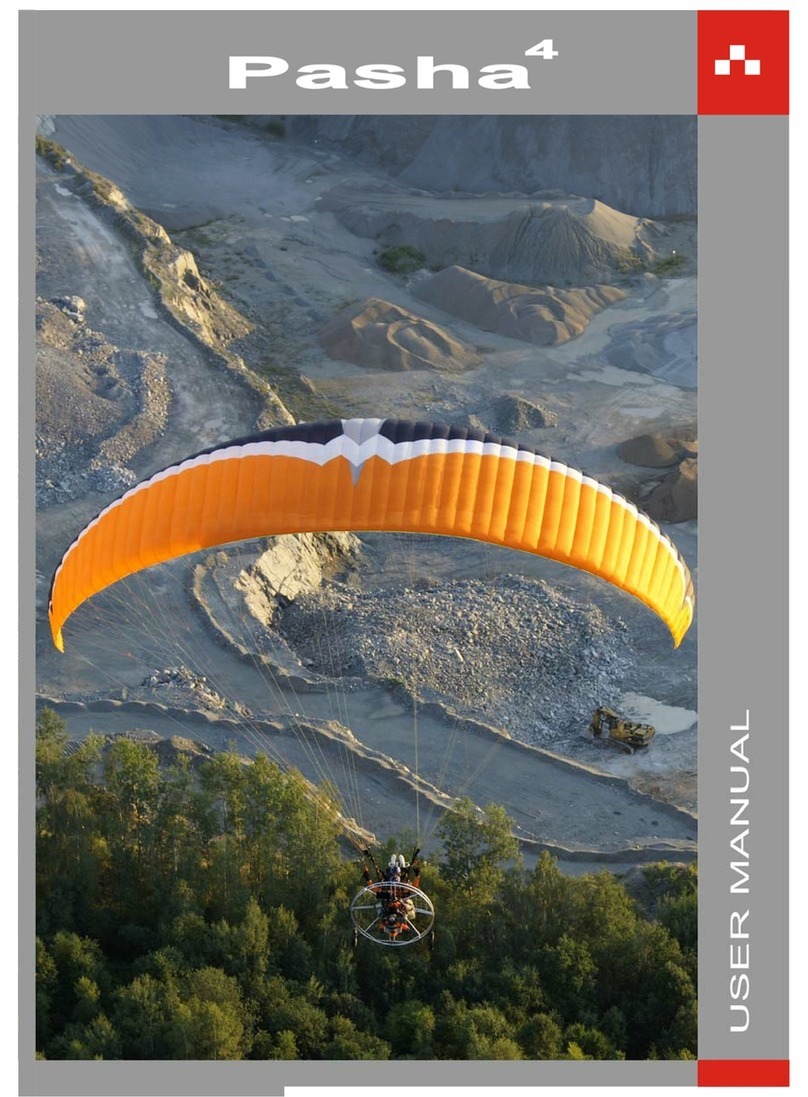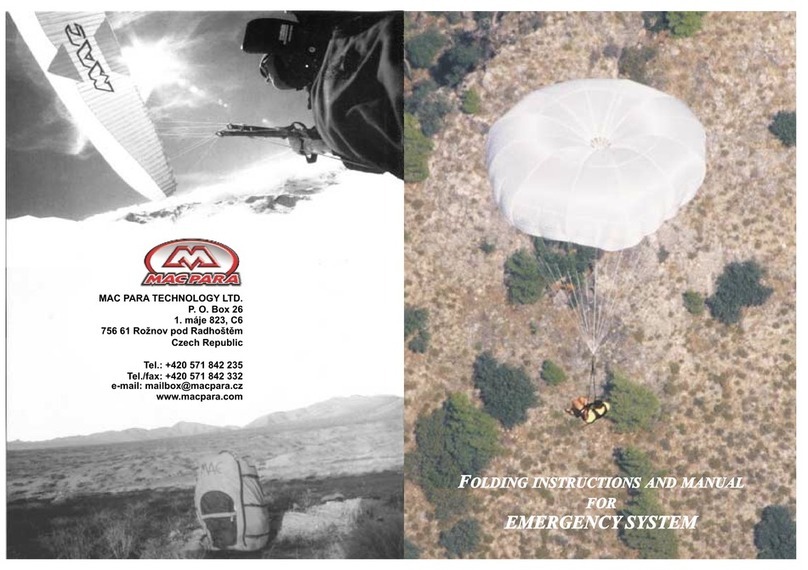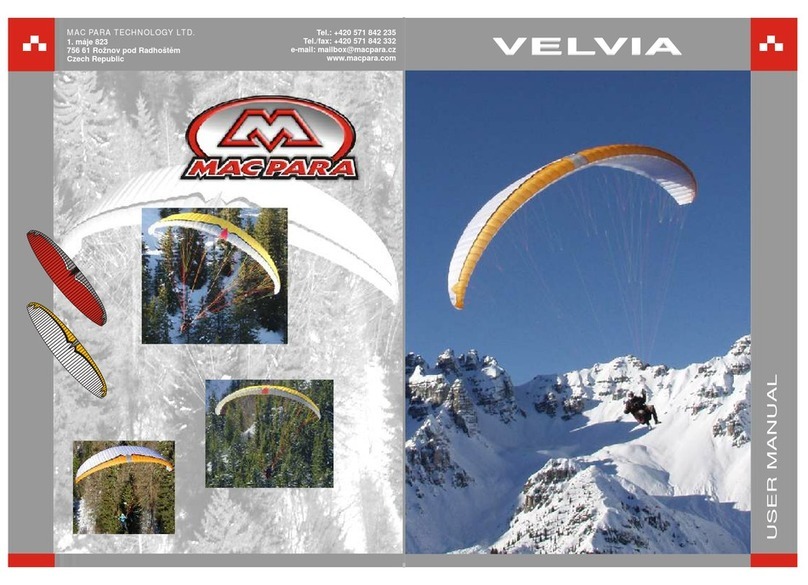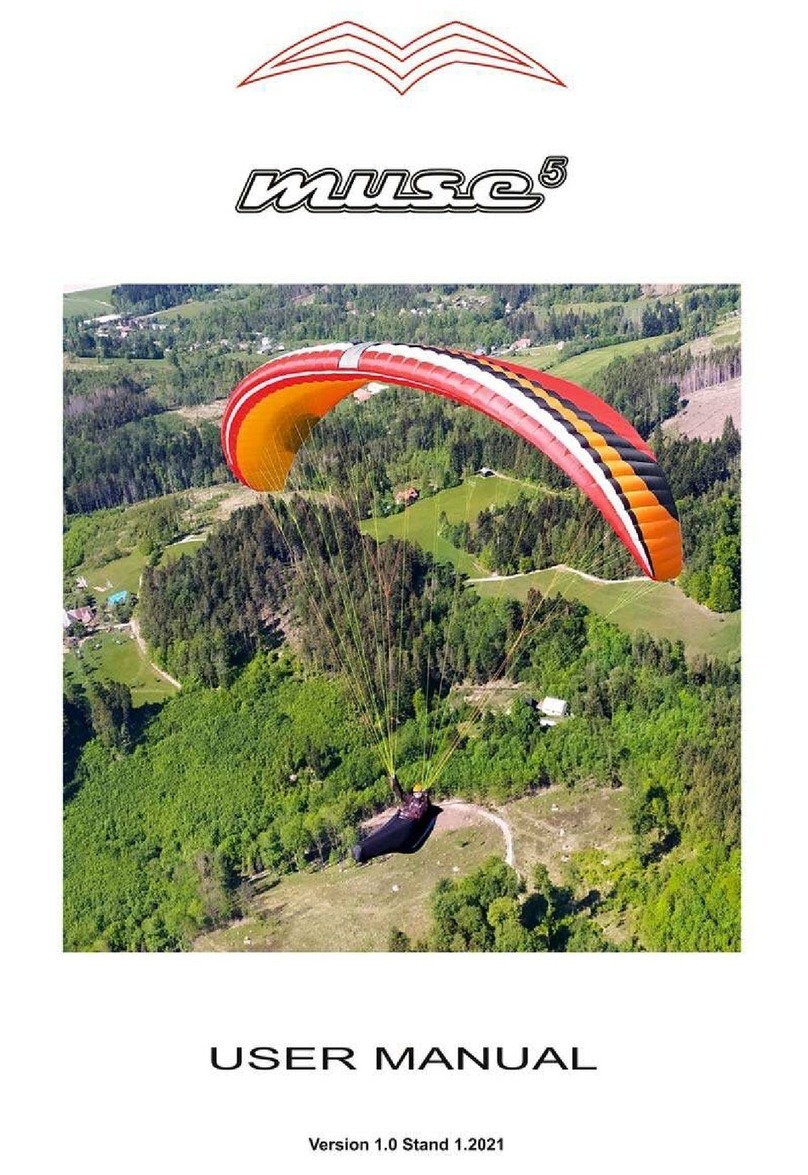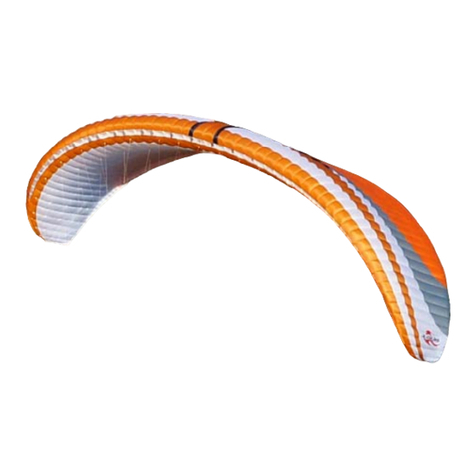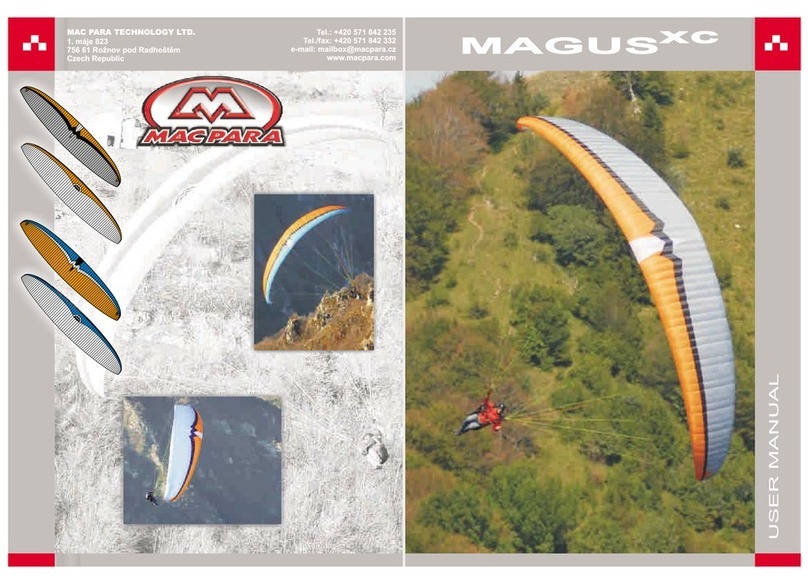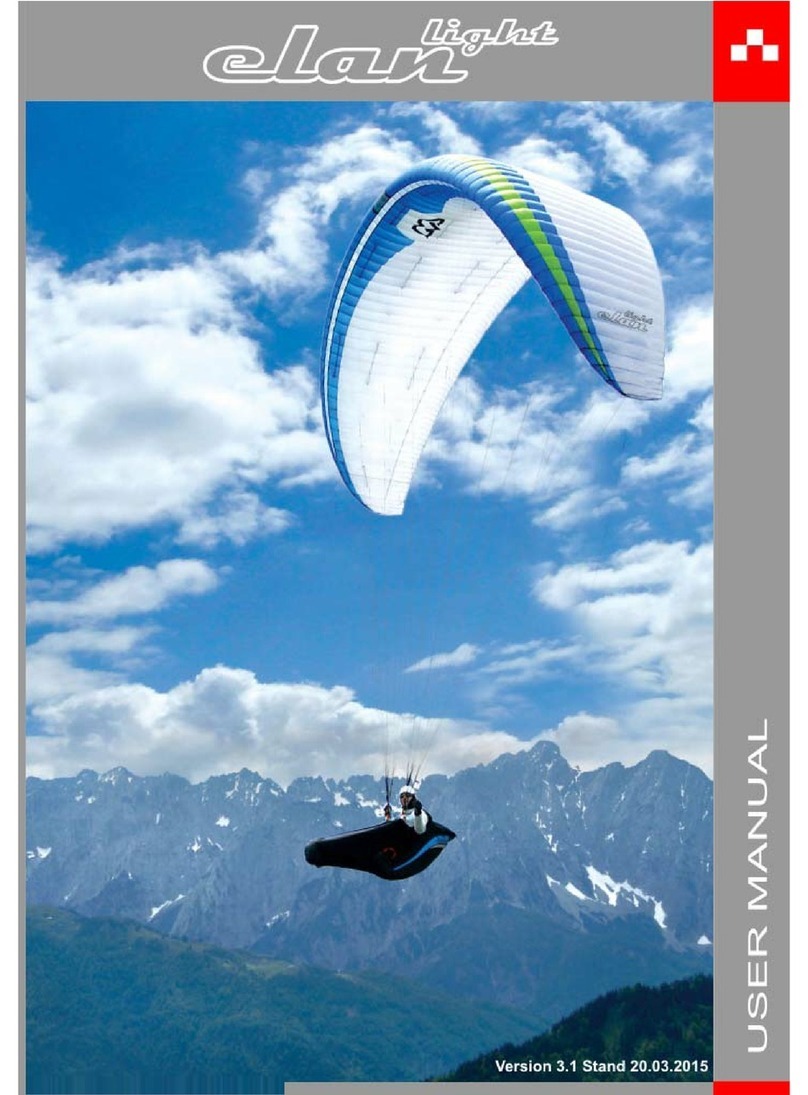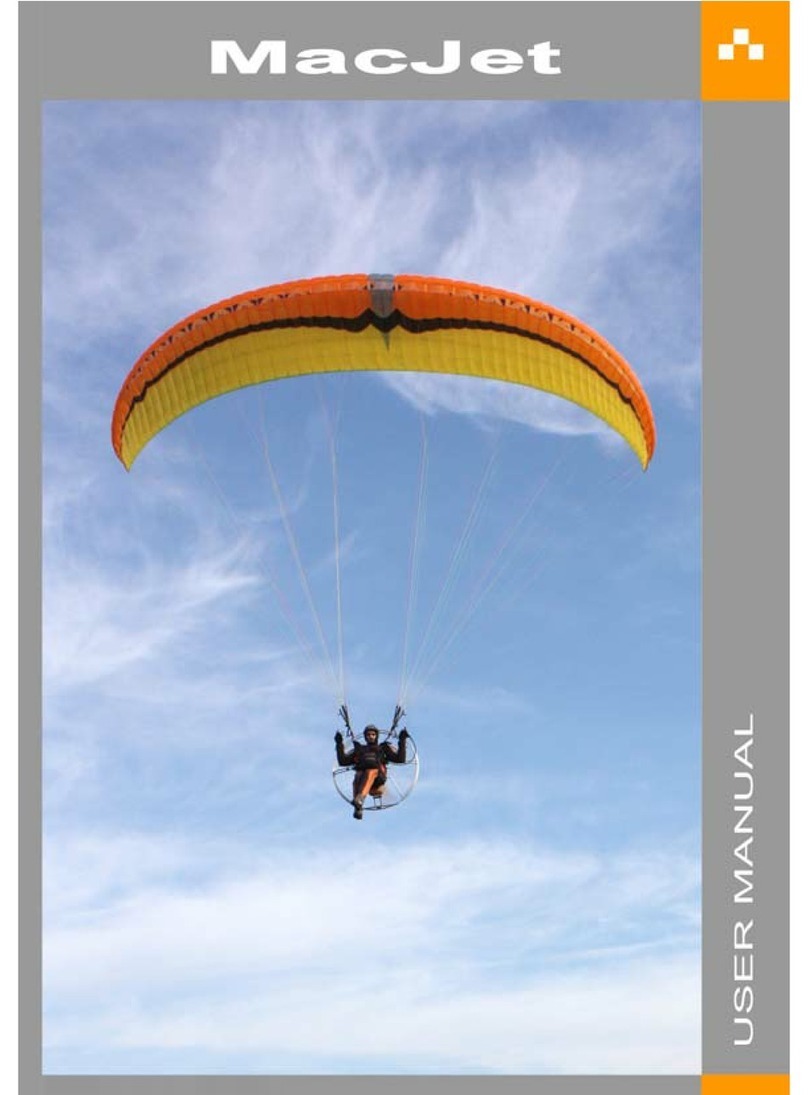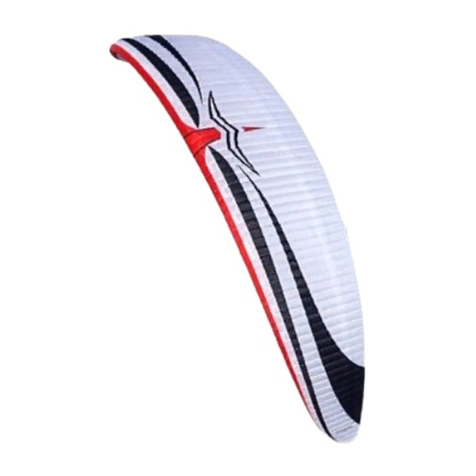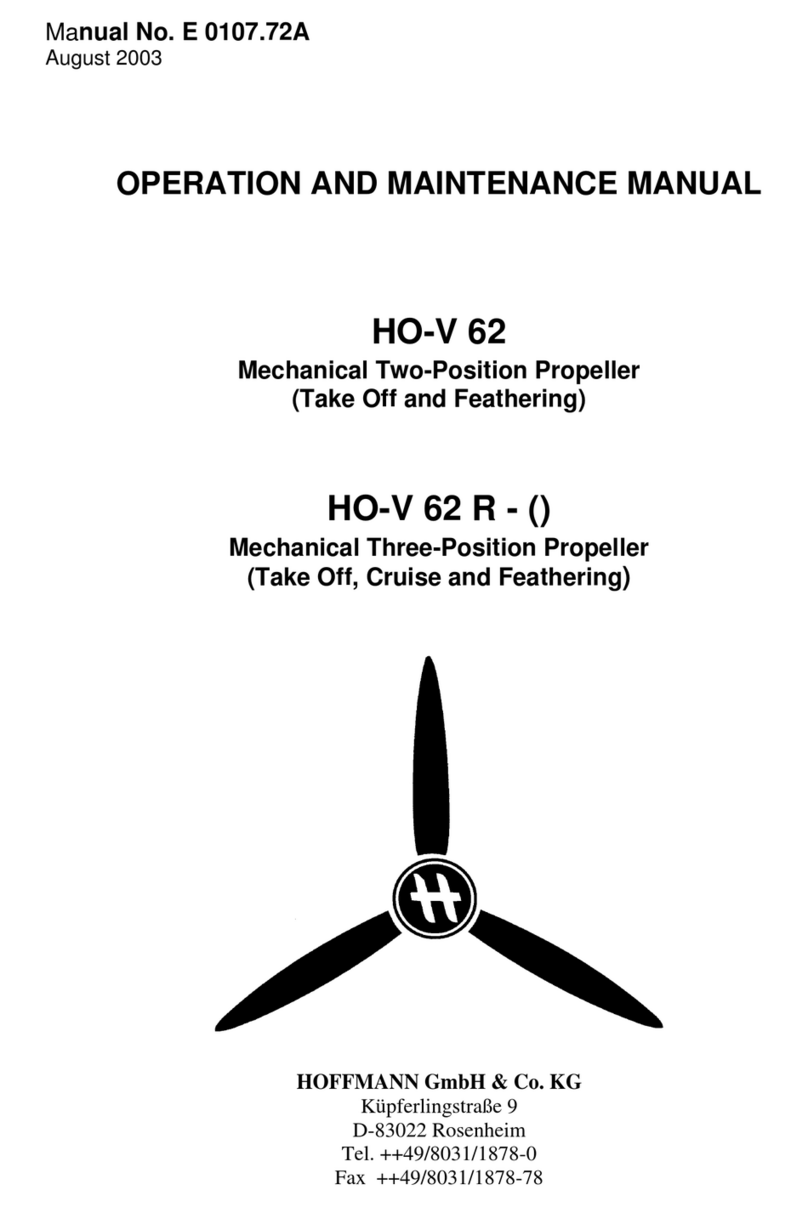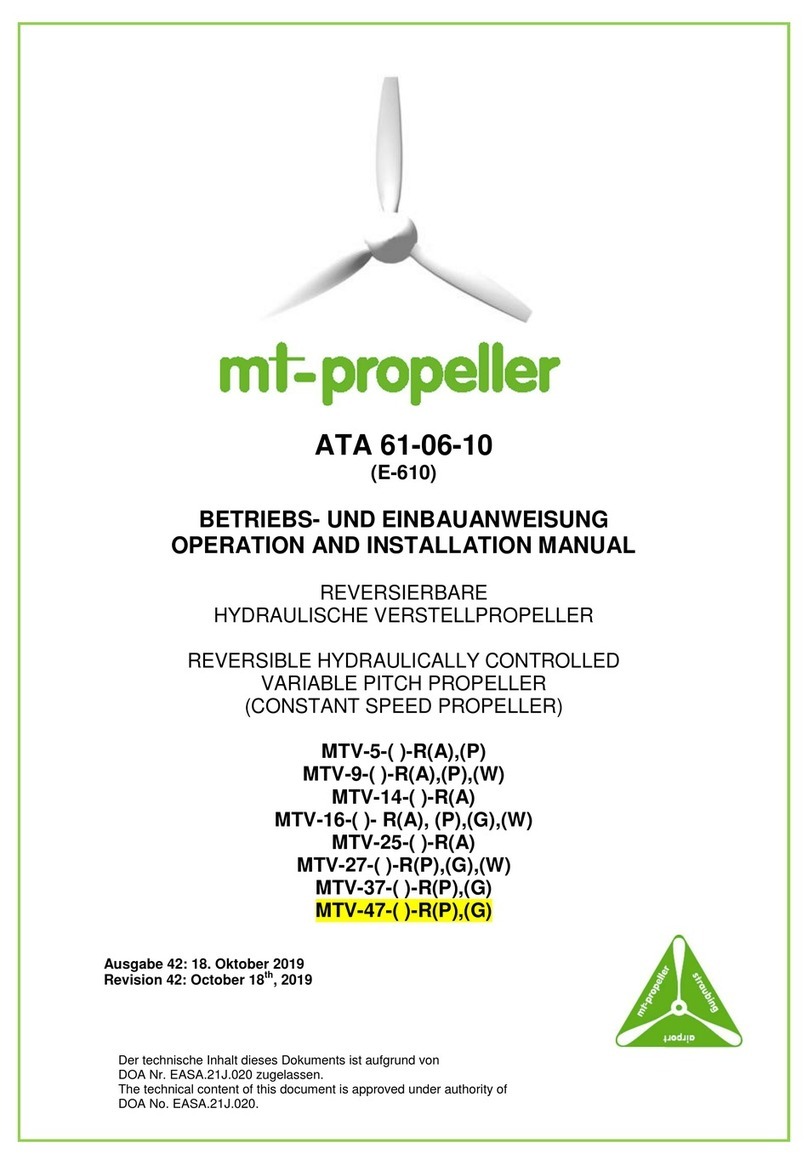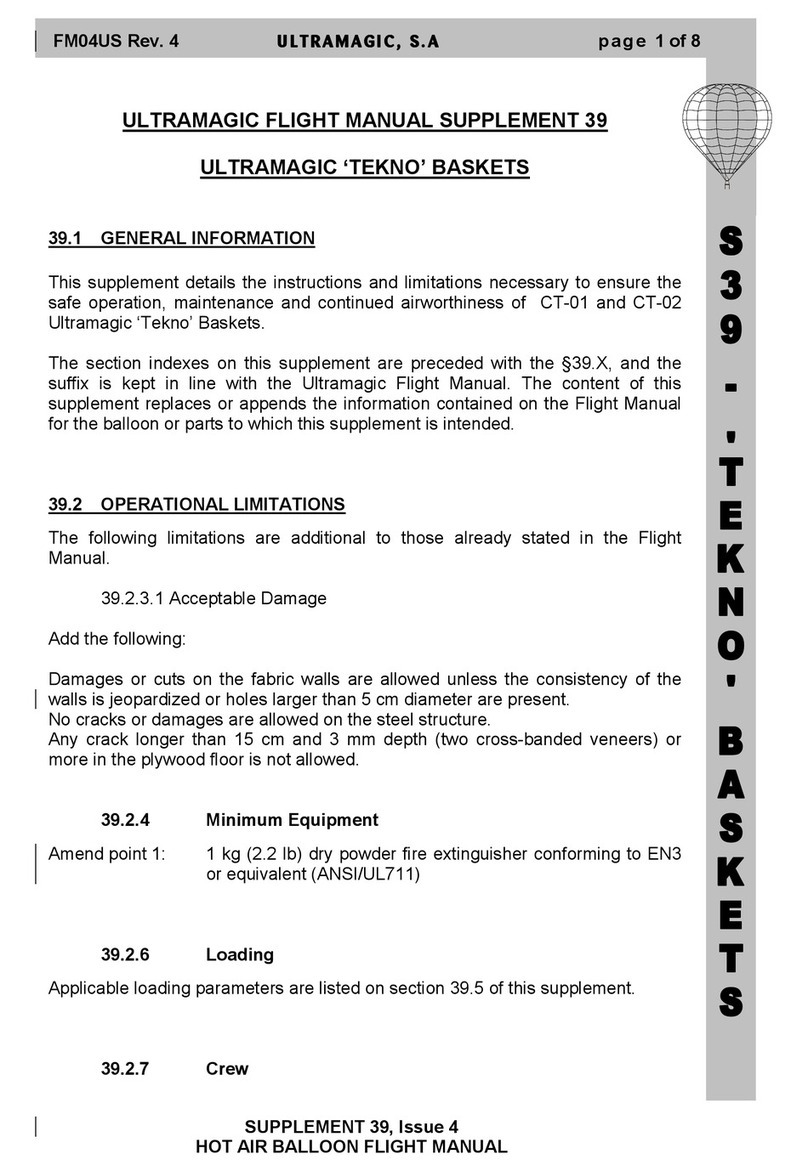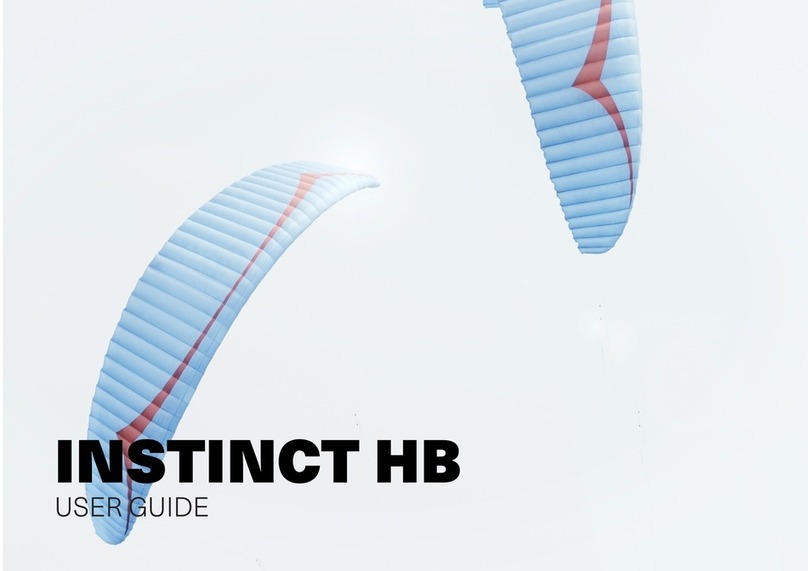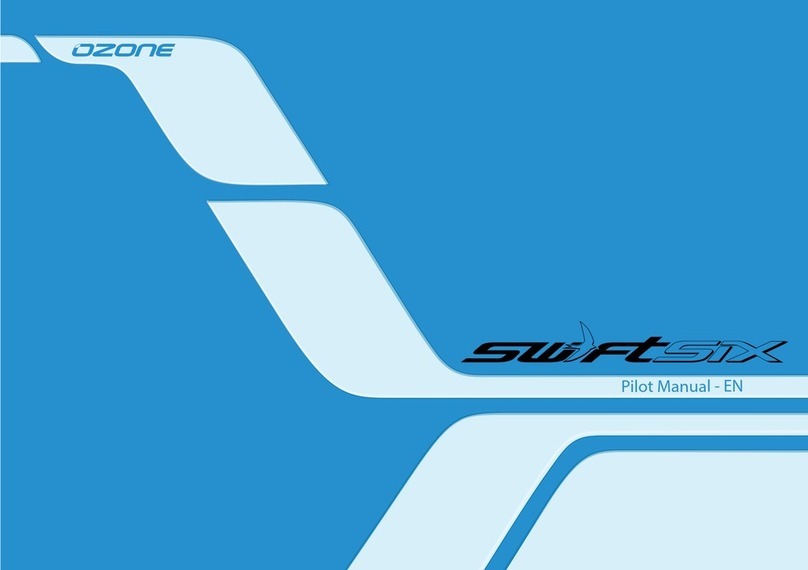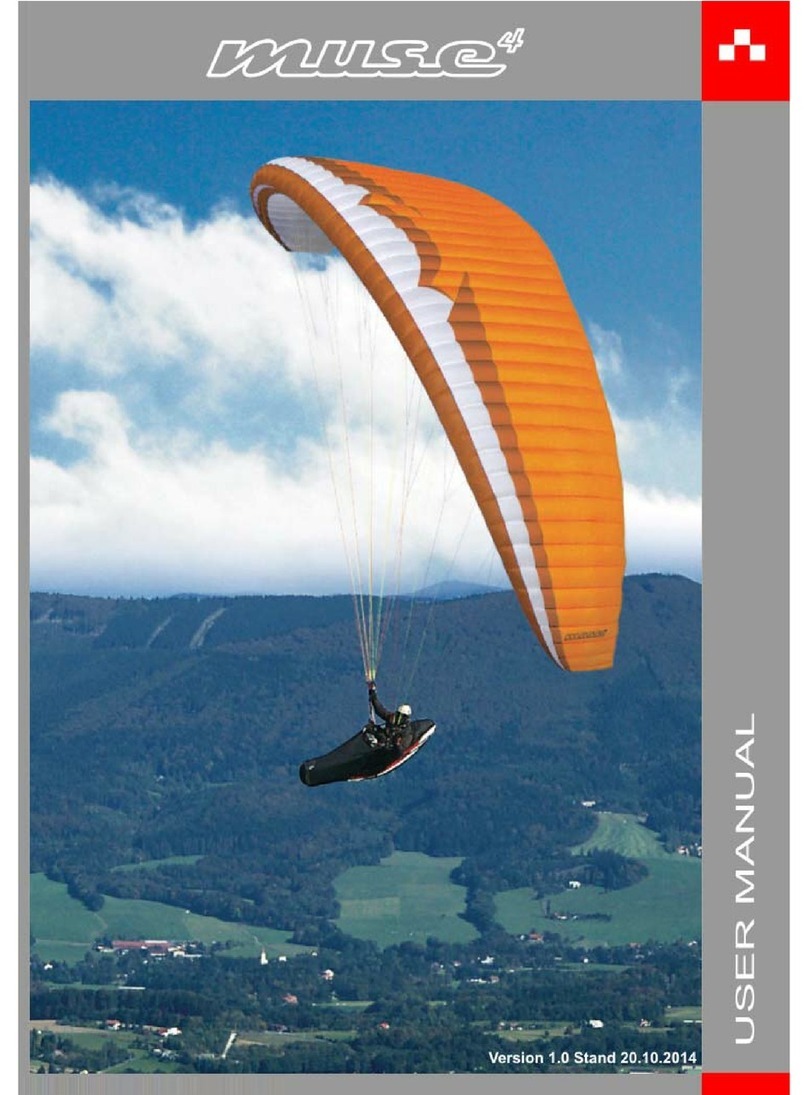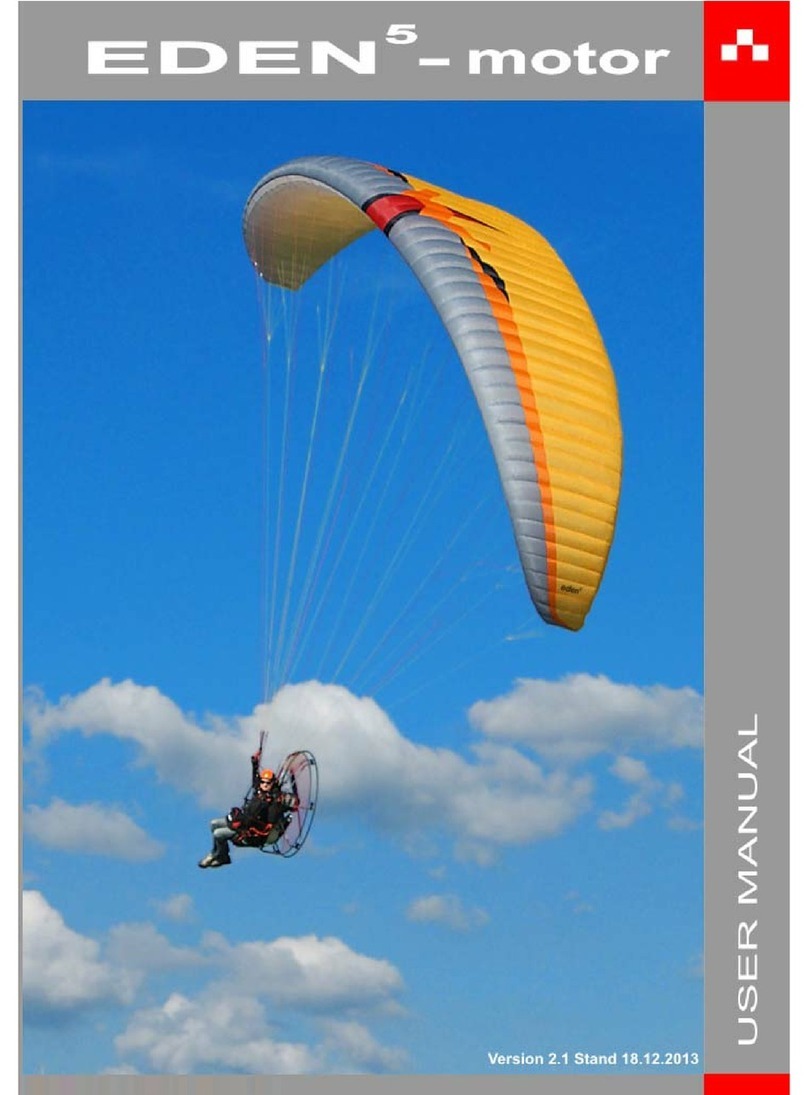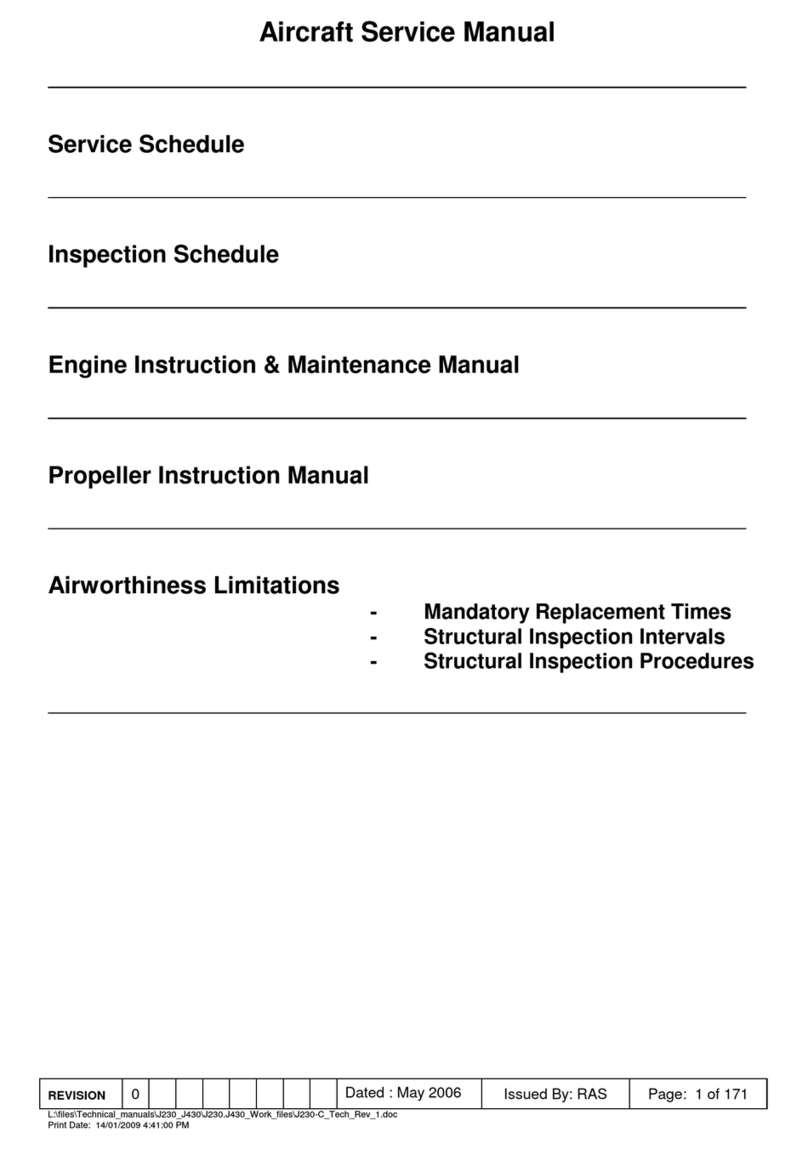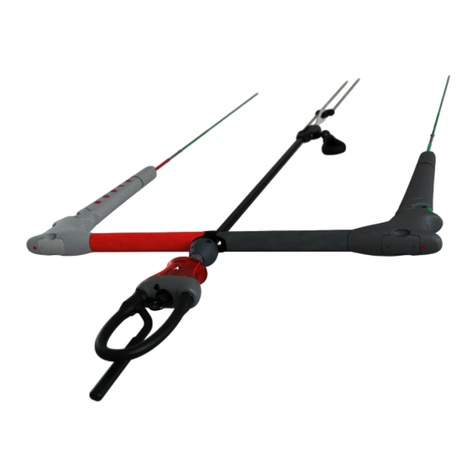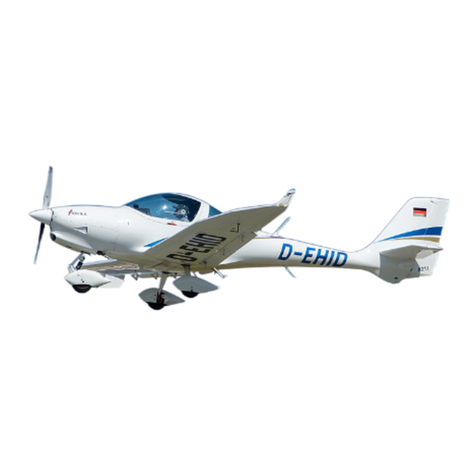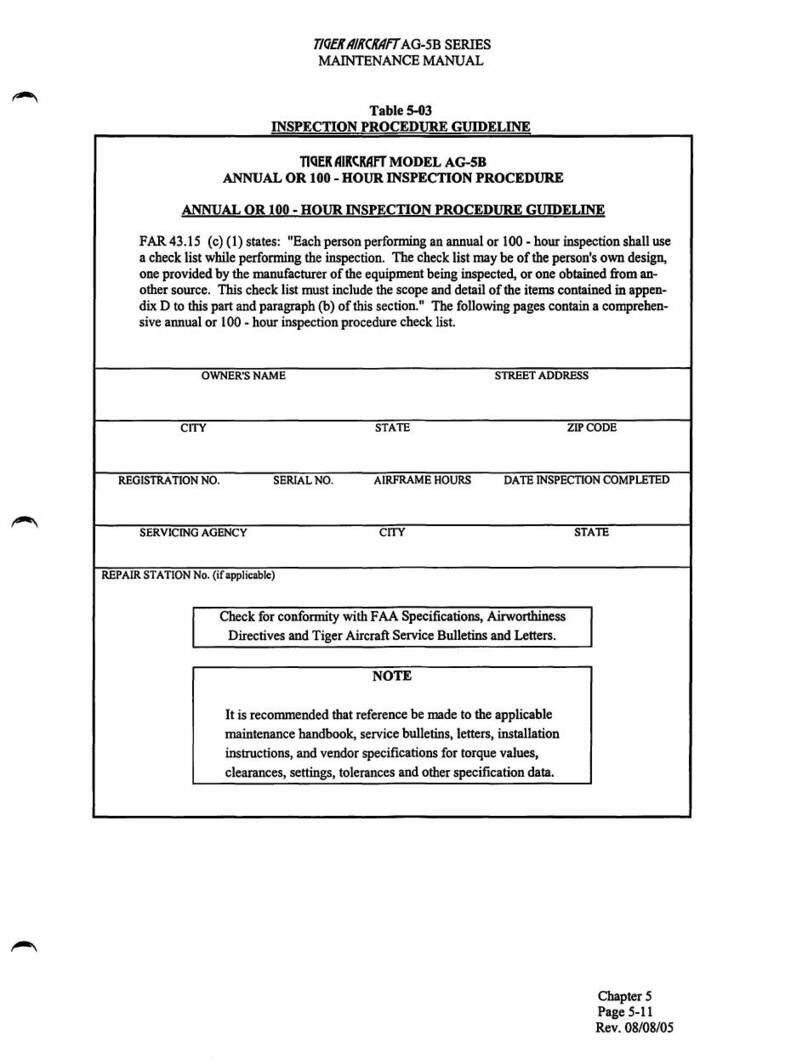7
Flight
Steering
Approachandlanding
Always fly with sufficient clearance from the terrain. The glides best with open
brakes, descends best with lightly applied brakes. In turbulence fly with brakes lightly
applied to avoid canopy collapse. If the canopy pendulums forward, this should be
corrected by prompt braking. A pendulum movement of the canopy backwards is
correctedbylooseningthebrakesingoodtime.
Turnscanbeinitiatedusingthebrakesintwodifferentways.
The pilot pulls the brake on the side to which he wishes to turn. To minimise sinking, the
brakeontheoutsideofthecurveislightlyapplied.
The pilot pulls the brake on the side to which he wishes to turn and shift his weight to the
same side. Turns can also be flown with the harness alone, by shifting the weight to the
insideof thecurve.This weightshifthas agreatereffect,themoreloosely thechest-strap
is fastened. An optimal steering technique is achieved by a combination of braking and
weightshifts.Itispilot'sskilltousebothofthesetechniquesspeciallyinthermals.
Afurtherpossibilityforsteeringisbestlimitedtoemergencies(ifthebrake-linesbreak,for
example).This entailsgentlypullingthefront(watchoutforcollapseofthecanopy)oron
D-riser (beware asymmetrical stall). We recommend that you do not use this form of
steeringinnormalflight.
To avoid stressful situations in the approach to landing, it is important to initiate the
process at an adequate altitude. This leaves you enough time to observe and
appropriatelydealwithwinddirectionandanyotheraircraftinyourvicinity.
The final approach should generally be made into the wind and with fully released
brakes, in order to maintain maximum energy in the glider. If the air is turbulent, it is
better to land lightly braked to minimise the possibility of the canopy collapsing. In order
to land on your feet, rather than lying on your back, you will need to lean forward in the
harnessnotlowerthan5mabovetheground.Atanadequateheight(about1-2mabove
theground),pullbothbrakesfullydownuntilthegliderissufficientlyslowed.
In a light headwind pulling the brakes only lightly is enough to give a soft landing. In a
calm, or even tailwind, you must pull the brakes as abruptly as possible. This
dynamicallyincreasestheangleofattackandgivesyouthemaximumbrakingeffect.
SPICE
Turnswith brakes
Turnswith brakesandweight shifting
8
Flightwithspeedsystem
Towedandmotorizedflight
Tomakefasterflightpossible,the isequippedwithaspecialspeedsystem.
Toacceleratetheparagliderwerecommendthefollowingsteps:
a)extendthespeedbar
b)usethespeedbartocontrolspeed
Never activate the speed system in turbulence, at low altitude, or when approaching a
landing(thelowerangleofattackresultsinlessstabilitydespitethehigherspeed).
The issuitablefortowedflight,andwasdesignedforparamotoring.
has no tendencies towards deep stall/parachuting. Therefore we allow tow-
launched flights with a similar techniques to that described above. There is sufficient
margintocounter-steerthegliderinanormaltowingsituation.Makesureyouuseproper
equipment,experiencedpersonnelandallrelevantsafetyprecautionsfortowing.
Thissectiondescribesflyingconditions which can be deliberately induced, orwhichcan
develop unintentionally due to turbulence or pilot error. Any pilot who flies through
turbulenceissuretobefacedwiththesespecialflightconditionsatsomepoint.Sotakea
good look at these flight manoeuvres or prepare for them by SIV (safety training over
water). Mastering these flying conditions significantly improves your active flight safety.
Sufficientheight,aswellasthecarryingofareserveparachute,isimperative.
SPICE
SPICE
SPICE
Note!!However,motorizedflying hasbeenmadewithgreatsuccessduetoits veryeasy
take-off characteristics, stability and good handling, always use certified combinations
ofengine-harness-glider.Ifindoubtcheckwithyourfederation.
WARNING!! Please always ensure that the brake lines are adjusted to the lengths
recommended here. Setting them shorter could lead to a tendency to stall during towed
flight.Apartfromthis,therearenospecialprocedures.
WARNING!! TheSPICEisnotsuitableforjumpsfromaircraft.
WARNING!!Allthe critical flightconditionsdescribedhere require thorough knowledge;
otherwisecarryingthemoutmay be very dangerous. Sufficient height abovetheground
isimperative.Bearinmindthatalldisturbancesofthecanopycanincreasethesinkrate
by 2 - 10 m/sec, depending on the degree of disturbance. Carrying out these
manoeuvreswronglymayleadtoacrash.
EXTREME AND CRITICAL FLIGHT MANOEUVRES












